The Ultimate Guide to Recovering from a Traffic Drop After Google's Algorithm Update

The Impact of Google's Recent Algorithm Update
Google's recent Helpful Content Update has really shaken up SEO and, honestly, it’s made a lot of websites lose traffic. Even sites that try to follow all the best practices are seeing fewer visitors. It kind of feels like studying hard for a test and then realizing, at the last second, that the teacher changed all the rules.
The Google Helpful Content Update has made things tougher for a lot of online businesses, so it’s pretty important to adjust fast to these new rules, or at least try to keep up with them.
Understanding the Sudden Drop in Traffic
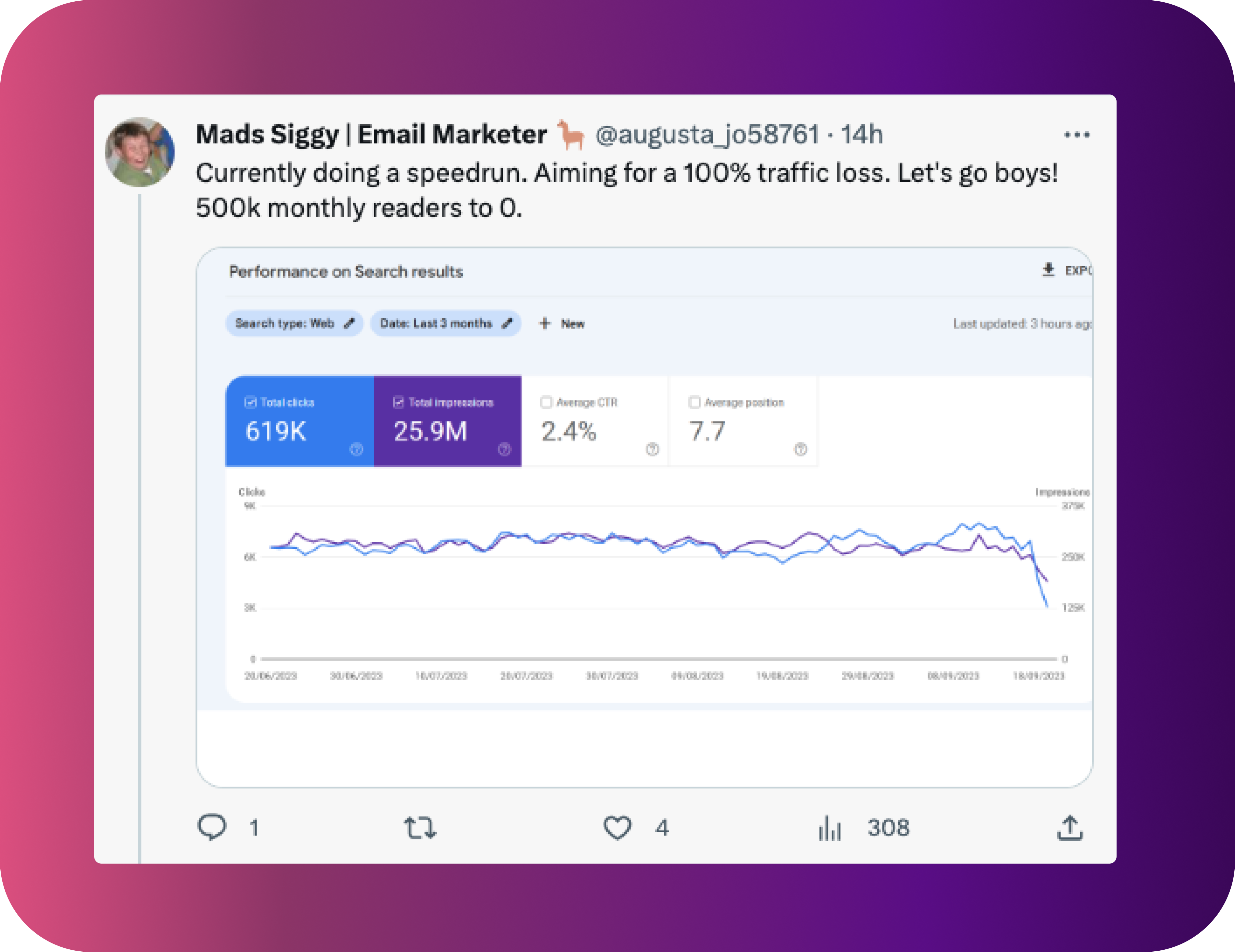
Elle-Rose, a travel writer and editor from the UK, shared on Twitter that her website, the one she’s been working on for 12 years, suddenly lost about 80% of its visitors after Google’s latest algorithm update. So yeah, that’s not just a small thing. It wasn’t only a hit to her online visibility and, like, her pride in her work, it actually affected her income too. (Her tweet is now private because of all the responses she got.)
So why did this even happen? It’s kinda frustrating. Google no longer really rewards just having great content or carefully following its rules. Unfortunately, it’s not really about how genuine your content is anymore. Instead, Google is more focused on how well your content is connected by meaning and the authority shown through links. Which sounds simple, but it’s actually a bit confusing and complicated when you look closer.
This sudden drop in traffic might be because of Google penalties, and there are basically two types: automatic and manual. Automatic penalties happen when Google’s system picks up problems during one of its updates. Manual penalties are given by actual people at Google who find things like spam, low-quality stuff, or other issues they don’t like.
Knowing the difference between these penalties really matters, because they’re often the reason for big, scary traffic drops after updates. In Elle-Rose’s case, her site might have been hit with an automatic penalty, since Google changed the way it judges content quality and how relevant it thinks a page is.
In the next sections, we’ll go into how you can figure out why your own traffic dropped, and share some ways to help your site recover and slowly get its visibility back again.
The Silver Lining
So, before you start imagining yourself climbing Mount Everest barefoot with spaghetti ropes and meatball anchors (yeah, we all think of weird stuff sometimes), there’s actually some good news here.
Recovering from a drop in traffic caused by search engine algorithm updates is not just possible—it can be done! And it doesn’t mean using risky or dishonest methods. It means changing your approach to focus on content that works well for both search engines and real people.
You might be sitting there wondering if this is really doable or if it’s just talk. The answer is yes, it really is! With AI writing tools like Junia AI, which are designed for SEO, it’s not just possible—it’s actually happening right now!
Why Recovering from a Google Algorithm Update Matters
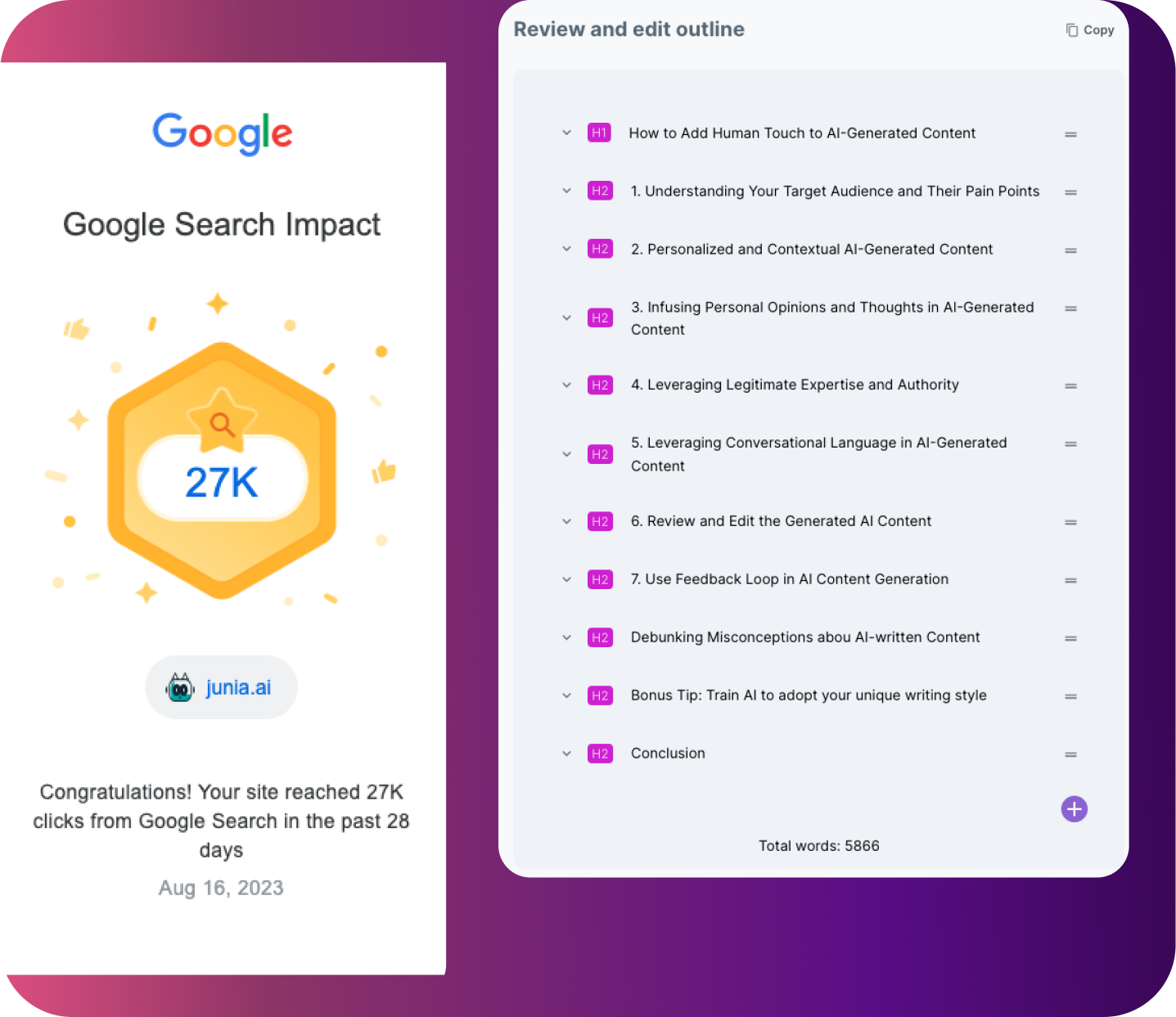
So yeah, get ready, because this part can be tough. Recovering from a drop in traffic really matters a lot for your website’s success, like long term. When things suddenly fall off after a Google Algorithm Update, you can’t just sit there and hope it fixes itself.
It’s honestly time to try a new strategy, not just following the rules like everyone else, but kind of learning them and then changing how you play the game a bit. You look at what went wrong, tweak things, experiment a little. Step by step.
If you do that, you can actually turn things around and start heading toward better results again. Not overnight or anything, but you can get your traffic back and probably make your site stronger than it was before.
Understanding the Google Algorithm Update
In SEO, there's this really important rule that pretty much everyone should try to follow:
Always keep up with Google's algorithm changes.
Right when you think you finally understand how it all works, Google goes and drops another update. It’s kind of never ending. Past big updates like Google Panda, which went after low-quality content, and Google Penguin, which targeted spammy links, have changed SEO a lot over time. And now, the newest update in this whole ongoing process is the Google Helpful Content Update.
What is the Google Helpful Content Update?
So basically, this update is all about trying to improve user experience by giving more importance to content that is actually helpful. Like, genuinely useful. You might think, isn’t all content supposed to be helpful? Well, not really. Google sees helpful content as information that is not just high quality, but also super relevant and trustworthy. According to the Google Webmaster guidelines, helpful content should meet users’ needs and clearly give them some kind of value.
This means your website should have:
- Trustworthy sources
- Relevant information
- Easy access for both people and search engines.
Sounds like a lot to handle, right? But just keep in mind, Google’s algorithm is supposed to focus on the end-user and their overall satisfaction.
At least, that’s what Google says. In reality, Google doesn’t always reward genuine content or real people behind it. This whole idea is often used to calm the industry a bit, since Google’s algorithm still isn’t perfect yet.
Impact on Website Rankings and Organic Traffic
If Google doesn’t see your content as “helpful” under its new rules, your rankings can drop pretty fast. And when that happens, you might suddenly see a big decrease in the number of visitors coming to your site naturally, like your usual organic traffic just kinda falls off.
Real-world Examples
Let’s check out a few real examples from Twitter. A bunch of websites started talking about how their natural traffic suddenly dropped a lot after this update.
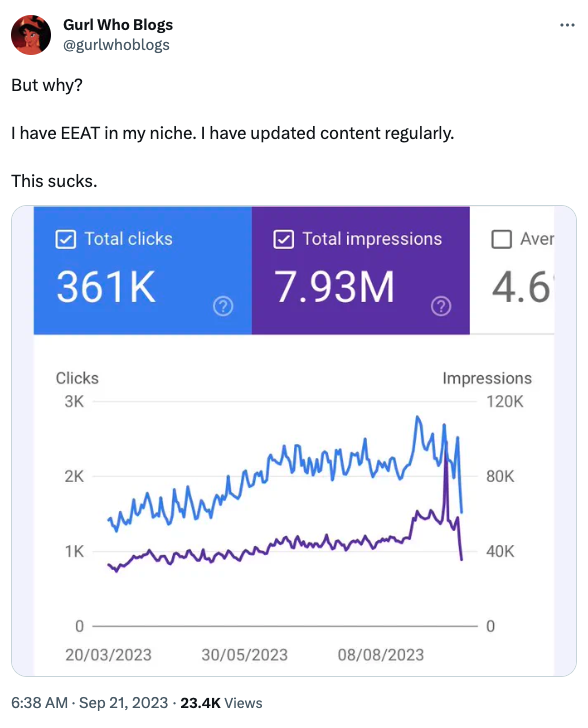
- For example, there’s this popular fitness blog that suddenly lost 40% of its organic traffic in just one night. They say they were sharing useful info, updating their content a lot, and really showing their expertise in their niche. But still, Google’s update hit them hard anyway.
- Another example is an online store that sells vintage watches. They had a big collection and really detailed product descriptions and everything. Even so, after the update, their traffic dropped by around 30%. Was it because they didn’t have strong backlinks to prove their trustworthiness to Google? Maybe. Or maybe not. It’s kind of unclear.
The Problem with Google's Ability to Judge Content Quality
Both of these situations show the same big problem. Google can’t always tell if content is actually high quality or not. So how does Google decide which helpful content really matches what users want?
The truth is, it doesn’t always do that very well.
A Common Situation
Like, have you ever searched for "best mountain bikes" and then you end up on these weird articles that say they’re listing the best bikes, but they’re barely about bikes at all or clearly don’t really know much about them?
So how do those pages still rank so high? A lot of the time they rely on backlinks and super heavily optimized articles for search engines. Which kind of leads to this question of whether search engine-first content is still the secret to SEO success.
It’s pretty frustrating if you’re just trying to find a decent bike to buy, isn’t it?
The Myth That Google Rewards Real People and Real Content in AI Content Creation

So you’ve probably heard this a bunch of times already: Google rewards real people and real content. Everyone keeps repeating it like it’s some magic rule.
But yeah, no. Let’s just clear that up. It’s actually a myth, and it really needs to be busted.
The truth is, Google’s algorithm doesn’t sit there reading your articles like a human. It doesn’t care how special your ideas are or how many hours you spent researching and rewriting and stressing over every sentence. It’s not impressed.
What it really does is look at how your content connects with other related content, and how trustworthy your links are. It checks patterns and relationships and signals. So in the end, it’s less about “real people” and more about how well your content fits into the bigger web of information.
Semantically Interlinked Content
So, what is semantically interlinked content anyway? Basically, Google wants to see content that’s connected in a clear and logical way. It’s not really just about how original your content is. It’s more about the connections between your ideas and how they relate to each other.
Understanding Semantic Interlinking
Like, let’s say you’re writing an article about baking the perfect chocolate cake. Google expects "chocolate cake" to be linked with other related topics, such as:
- "Cocoa powder"
- "Baking temperature"
- "Icing"
When you link stuff like this, it helps Google understand your content a lot better. You can also use AI tools like ChatGPT, Claude, or Gemini to quickly create these kinds of connections without too much effort.
Tip: Pick an AI writing tool that can automatically add internal links for you, like Junia AI's auto internal linking tool.
Authority Based on Links
So, let’s talk a bit about link authority. Like, does your website actually have backlinks from trusted and popular sites? Because that stuff really matters. It’s kind of like getting a thumbs up from the most popular kids at school, honestly. When they vouch for you, your own reputation goes up too, and your site looks way more legit.
Here’s the thing: Google loves popular websites! It really does. So even if your content is super good and helpful and whatever, if you don’t have quality backlinks, Google might just ignore it or not really notice it much.
Want to learn how to rank without backlinks? Kind of like, working around that whole thing? Read this detailed guide.
The Frustration of Following Rules
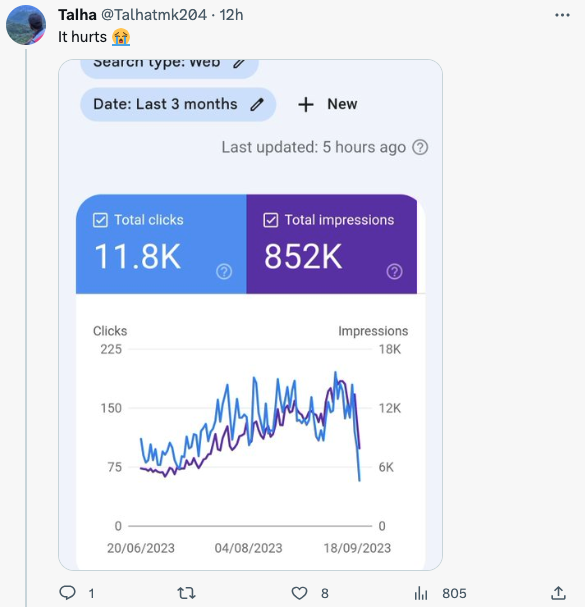
This can be really frustrating. You follow every rule so carefully. You spend hours and hours writing original, engaging stuff that actually talks to your audience like, you know, real people. You do everything “right” and somehow success still feels kinda far away. Almost out of reach.
Imagine you’re a chef. You’ve nailed every recipe and worked like crazy to perfect each dish. Your meals are actual masterpieces. But when the restaurant critic (we’ll call them Google) shows up, they don’t really care that much about your cooking skills.
So what are they even looking at instead?
Shiny Cutlery Instead of Great Cooking?
You’d think they’d be all about the flavors, or at least notice the way the food looks on the plate. But nope. They seem way more into how shiny the cutlery is or how perfectly the napkins are folded.
It sounds kind of weird, but it’s actually a decent way to picture how Google’s algorithm acts. It’s not only about the quality of your content (your cooking), but also a bunch of other stuff that might feel less important to you personally.
Sticking with the restaurant idea for a second:
- Link Authority: This is like getting compliments from famous chefs or big-name food critics. Their approval can make your restaurant blow up in popularity, even if your dishes were already amazing before that.
- Semantic Linking: Think of this like choosing the right wine for each meal. Most people might not notice right away, but to experts (and search engines), it actually matters a lot.
So Google isn’t totally ignoring your content. It’s just that they’re checking all these other pieces too. So yeah, next time you create content, try to remember to polish that cutlery a bit as well!
Is Google's Algorithm Overrated?
So, with all this in mind, some people might think Google's algorithm is kind of overrated. Like, if it can’t always recognize real content made by real people, or even understand simple words properly, then what’s the point of it, right?
But really, the goal here isn’t to just complain about Google or its algorithm. It’s more about helping you actually understand how it works, so you can use it better and not fight against it all the time.
Instead of only focusing on writing for people first, try changing your approach a little. Write articles that still work well for search engines, but are also interesting, kind of fun to read, and useful for real readers too.
Try to find that balance between matching Google’s preference for connected content and strong links, while still giving your readers real value and good information. Doing that could help you recover from losing traffic and even improve your SEO rankings!
So the main idea is this: The Google Helpful Content Update is changing SEO a lot. It’s pushing website owners to rethink how they do things, focusing more on quality instead of just pumping out a ton of content, and trying to keep both the algorithm and users happy at the same time. And yeah, this update might feel kind of harsh or annoying, but it’s really just reminding us to do what we should have been doing from the start. Creating truly helpful content for users. But we still have to write it in a way that Google can actually understand, or else it won’t matter much!
Recovering from a Traffic Drop
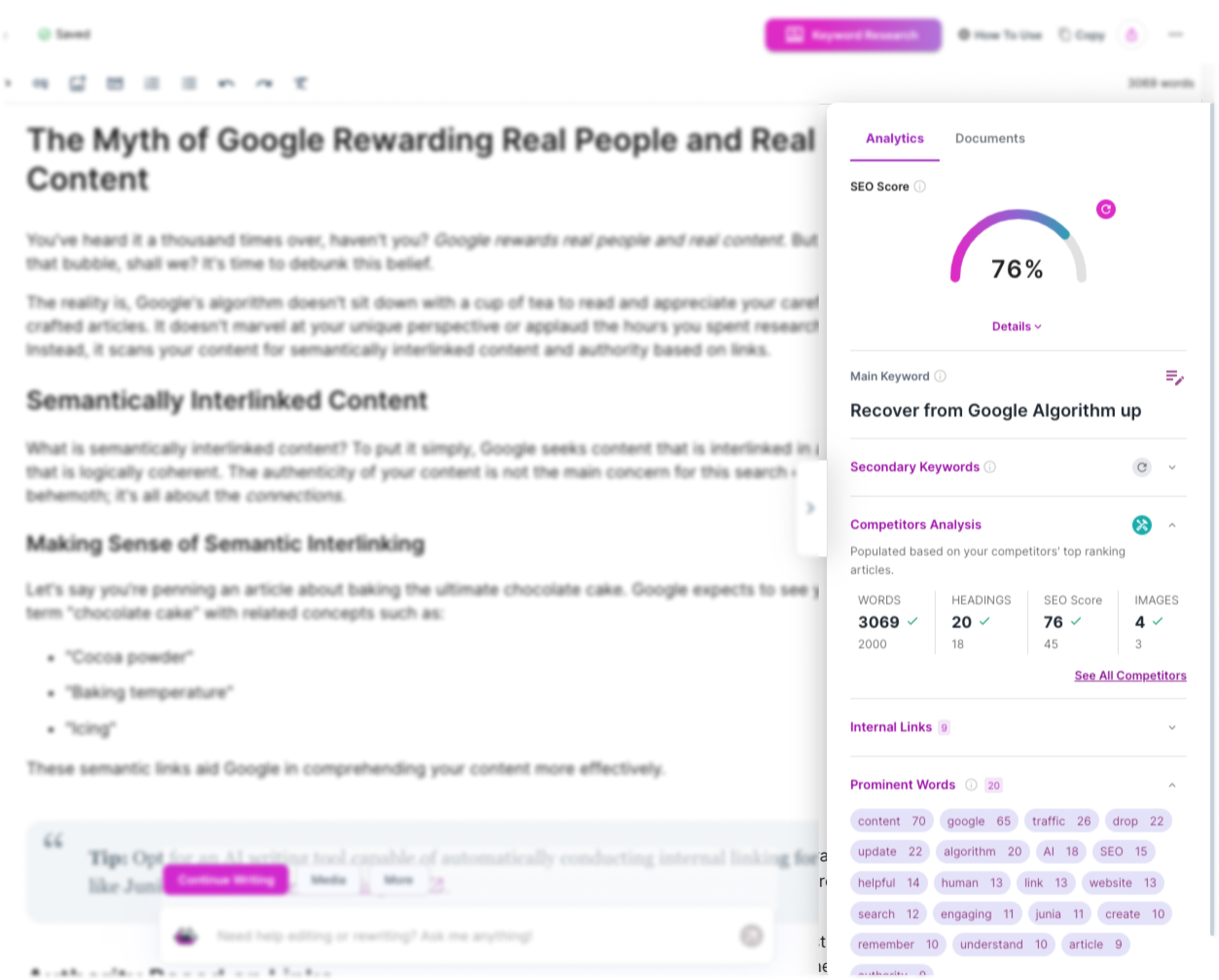
A traffic drop can feel pretty scary for any website owner, honestly. But it’s really not the end of the world. The main thing is figuring out what actually caused it, and then using some smart strategies to fix it and slowly get things back up again.
Types of Google Penalties
There are basically two main types of Google penalties. You’ve got manual penalties and algorithmic penalties.
1. Manual Penalties
Manual penalties happen when Google’s human reviewers decide your website broke some of their rules. Kind of like getting called out by a real person. To check for manual penalties in Google Search Console, look for:
- Notifications under the "Security & Manual Actions" section.
Some common signs of manual penalties include things like:
- A sudden drop in search rankings or website traffic.
To really analyze your website's performance and spot issues that might cause manual penalties, you can use tools such as [Ahrefs](https://ahrefs.com/). It gives you a lot of useful info about your site's SEO health and, yeah, helps you see what’s going wrong.
2. Algorithmic Penalties
Algorithmic penalties happen automatically when Google updates its algorithms, like Panda or Penguin and so on. These penalties usually show similar signs as manual ones, but they can also include things like:
- Changes in traffic that match the timing of known Google updates.
To figure out if an algorithmic penalty is affecting your site, compare your traffic data with the dates of Google updates. Using SEO tools like [SEMrush](https://www.semrush.com/) can help you track those changes a lot more easily, instead of guessing.
Initial Recovery Steps
If you think your site has been penalized, you can try these first steps to start recovering:
- Review your content carefully and find any low-quality or spammy material, then fix it or remove it.
- If you have a manual penalty, fix the problems and then submit a reconsideration request to Google.
2. Possible Reasons for the Traffic Drop
So, there are a few reasons why your traffic might have dropped. One big one is updates from Google. When Google changes its algorithms, it can totally change how your content is ranked. And if your content doesn’t really fit with Google’s new rules anymore, you might start seeing less traffic coming in.
Also, using too many keywords in your content, called keyword stuffing, used to be pretty common, but now Google doesn’t really like it. If your content is packed with keywords but doesn’t give much real value to people, that can also make you lose visitors. Like, people just leave because it doesn’t help them.
Another thing is sometimes the content is just too complex. For both users and Google to really understand properly. Since user experience (UX) is super important now, it’s better to create content that’s clear and easy to follow, instead of stuffing it with a bunch of technical terms that confuse everyone.
So in these cases, you should focus on making articles that are optimized for search engines but still easy and interesting for people to read. Basically, helpful and human, not just written for bots.
3. Ways to Recover From Traffic Loss
So, after you figure out some possible reasons for the traffic drop, the next step is to actually plan how you’re going to recover from it.
1. Improve Your Current Content
Start by going back to your existing content and updating it so it matches what Google wants right now. Make sure your posts are packed with useful information, super relevant, and honestly just helpful for readers. Also, take another look at your keywords and check if they still match what your audience is actually searching for. If not, tweak them a bit.
2. Get High-Quality Backlinks
Backlinks are still really important for building your website’s authority. When you get strong, high-quality backlinks from trusted sites, it can help Google see your site as more reliable. This can slowly help bring back some of that lost traffic, piece by piece.
3. Create a Topic Cluster to Build Search Engine Trust
One really good way to win back trust from search engines is by creating something called a "Topic Cluster." You might be wondering, what is a topic cluster? Let’s break it down real quick.
A topic cluster is basically a group of connected web pages that all focus around one main "pillar" page. That pillar page covers a broad topic, and then you have several related pages that talk about smaller subtopics. This setup helps share authority between all the pages, which makes it easier for them to rank higher. Kind of like a little web where each part supports the others.
Here’s how to build a solid topic cluster:
- Pick Your Pillar Content: Choose a broad topic that really matters to your brand or business. This will be your main pillar page, a detailed guide with valuable info on something your audience actually cares about.
- Create Related Content: Once your pillar page is done, create more in-depth pages around related subtopics. These give more detail and add extra value around that main topic.
- Add Internal Links: This part is super important. Link all those subtopic pages back to the pillar page using clear anchor text. That way, you build a little network that helps both users and search engines find and understand everything.
Building a topic cluster doesn’t just boost SEO, it also gives your visitors organized and high-quality content, which is pretty nice honestly — who wouldn’t like that? It shows search engines that you actually know what you’re talking about in your niche, which helps recover lost traffic and improves your site’s overall performance.
And don’t forget, creating a topic cluster isn’t only about search engines. It’s also about making things better for real users. Giving them the best experience possible is what really matters in the long run.
4. Focus on User Experience and Engaging Content
Make user experience a big priority in your recovery plan. Your site should be easy to use, work smoothly on mobile, and have interesting content that keeps visitors around. You want people to feel like it’s worth coming back, not just clicking and leaving.
5. Change Your Target Keyword
Sometimes, no matter how much effort you put in (and yeah, it’s frustrating), Google just doesn’t seem to reward your content for the keyword you’re targeting.
Does that mean you’ve failed? Nope, not at all. It usually just means you might need to rethink or adjust your strategy a bit. Maybe it’s actually time to find a new target keyword and try again from a slightly different angle.
4. Use AI Writers to Create Search-Engine Friendly Content
Writing content that is both SEO-friendly and actually interesting to read can be pretty hard sometimes. That’s where AI writers made for SEO, like Junia AI, really come in handy. Junia AI focuses on creating long articles that rank well on search engines and still feel nice and readable for real people, not just robots.
When you use Junia AI, you get a smart tool that understands what Google is usually looking for, while still keeping readers hooked. It finds that sweet spot between SEO-focused content and simple, easy-to-read articles. Which is super helpful if you’re trying to recover after a traffic drop from a Google update.
Just remember, every setback is also a chance to bounce back stronger. With some solid planning and tools like Junia AI, you can turn a traffic drop into a real opportunity to hit even higher rankings!
Balancing SEO and Content for Readers

So yeah, let’s just get straight to it. Good content basically has to keep two “people” happy at the same time: Google’s algorithms and your actual readers.
Why Focus on Both Matters
Thing is, Google can't tell if your content is truly helpful. It just uses a bunch of complex formulas and signals to guess how relevant your site is to what people are searching for. But it doesn’t really “get” quality or depth like a real person does. Which is kind of annoying but also just how it is.
Your readers though, they want useful stuff. Real answers, interesting stories, and content that’s easy to read without feeling like homework. They’re not sitting there thinking about keywords or tags. They just want to learn something, be entertained a bit, or get help with a problem. If you add some personality and honesty in there, you’ll have a much better chance of them coming back again.
How AI Can Help Find the Right Balance
Trying to balance SEO stuff with content that feels good for humans can honestly feel like walking on a tightrope in the dark. Kind of stressful. That’s where AI writing tools focused on SEO can really help, because they make that whole process less painful. Tools like Junia AI help you find that sweet spot in the middle.
They help by working keywords into your writing in a natural way so it doesn’t sound robotic. They organize your content so it makes sense for both Google’s bots and real people reading it. They deal with the more boring technical SEO details while you keep the writing interesting and engaging. Sort of like juggling sharp knives and flowers at the same time and somehow not dropping anything.
Tips for Creating Content That Works for Both
- User Intent: Figure out why people are searching your keywords in the first place. What are they actually trying to find out? Then give them clear, simple answers they don’t have to fight through.
- Keyword Use: Use your main and related keywords in a smooth, natural way throughout your text so it doesn’t feel forced or weird.
- Engagement: Try using stories, questions, and real-life examples to connect with readers. Write like a normal person talking to another person, not like a robot.
- Formatting: Break things up into smaller sections with headings, lists, and images so it’s easier to skim and read. This also helps Google understand your content better.
- Links: Add links to other helpful pages on your own site and to trustworthy external sites too. This can boost SEO and also give readers more useful info.
Remember How Google Sees Your Content
Google still doesn’t understand language as deeply as people do. It can miss little details or subtle meanings or even jokes.
- "Will Google understand this word?"
- "Does this sentence answer a question clearly?"
- "Will Google get that this is a rhetorical question or metaphor?"
End goal is pretty simple: you want content that works well for both search engines and humans at the same time. It takes some practice and a bit of trial and error, but with the right tools (looking at you, Junia AI) and some solid methods, it’s totally possible.
Conclusion
We've covered a lot! So yeah, we went from talking about Google's Helpful Content Update to clearing up those myths about Google favoring "real" content. And then we also looked at traffic drops and shared some pretty practical tips on how to recover from them too. Kind of a lot, honestly, but it all connects.
Adapting to Google's Algorithm Changes
Google's algorithm updates can feel tricky, but they can be managed. Honestly, things change all the time, so staying flexible is super important in this kind of shifting environment. It’s really about staying active and making changes while other people just sit there and wait for everything to calm down. SEO isn’t only about following Google’s rules, it’s also about building valuable content that actually helps people and still works well for search engines too.
Facing Challenges Together and Growing Stronger
We're all in this together! Every webmaster and content creator has run into a sudden drop in traffic at some point. It happens a lot in the online world, honestly. Instead of just feeling discouraged or stuck, we can try to use these moments as chances to grow and fix things up a bit.
Keep creating! Keep improving! Keep adding value! Recovering can be tough and kind of slow, but every little effort helps. It might be really tempting to just give up when your hard work doesn’t get noticed right away or traffic goes quiet. But remember, great websites and strong online reputations usually take time to build. Sometimes a long time. And that’s okay.
Meet Junia AI: Your Top SEO Writing Tool
Let’s make things easier for you. Just picture this for a second. Imagine having a tool that knows SEO as well as you do, or honestly, maybe even better sometimes. It creates interesting content and also sneaks in just the right SEO touch so both people and search engines are kind of happy at the same time.
That’s where Junia AI comes in. It’s not just any AI writer, it’s actually made specifically for SEO. It helps you bounce back from Google algorithm changes like this one that mess up your traffic out of nowhere. Think of it like your personal SEO helper, quietly creating content that ranks well and keeps readers interested and staying on the page. Whether you’re working on long blog posts or quick catchy social media updates, Junia AI can help a lot.
So why wait? You can start recovering your traffic today with Junia AI. Let’s beat Google’s updates together and slowly climb higher in search results. Remember, every challenge has a solution, and yours could honestly be an AI-powered boost for your SEO.